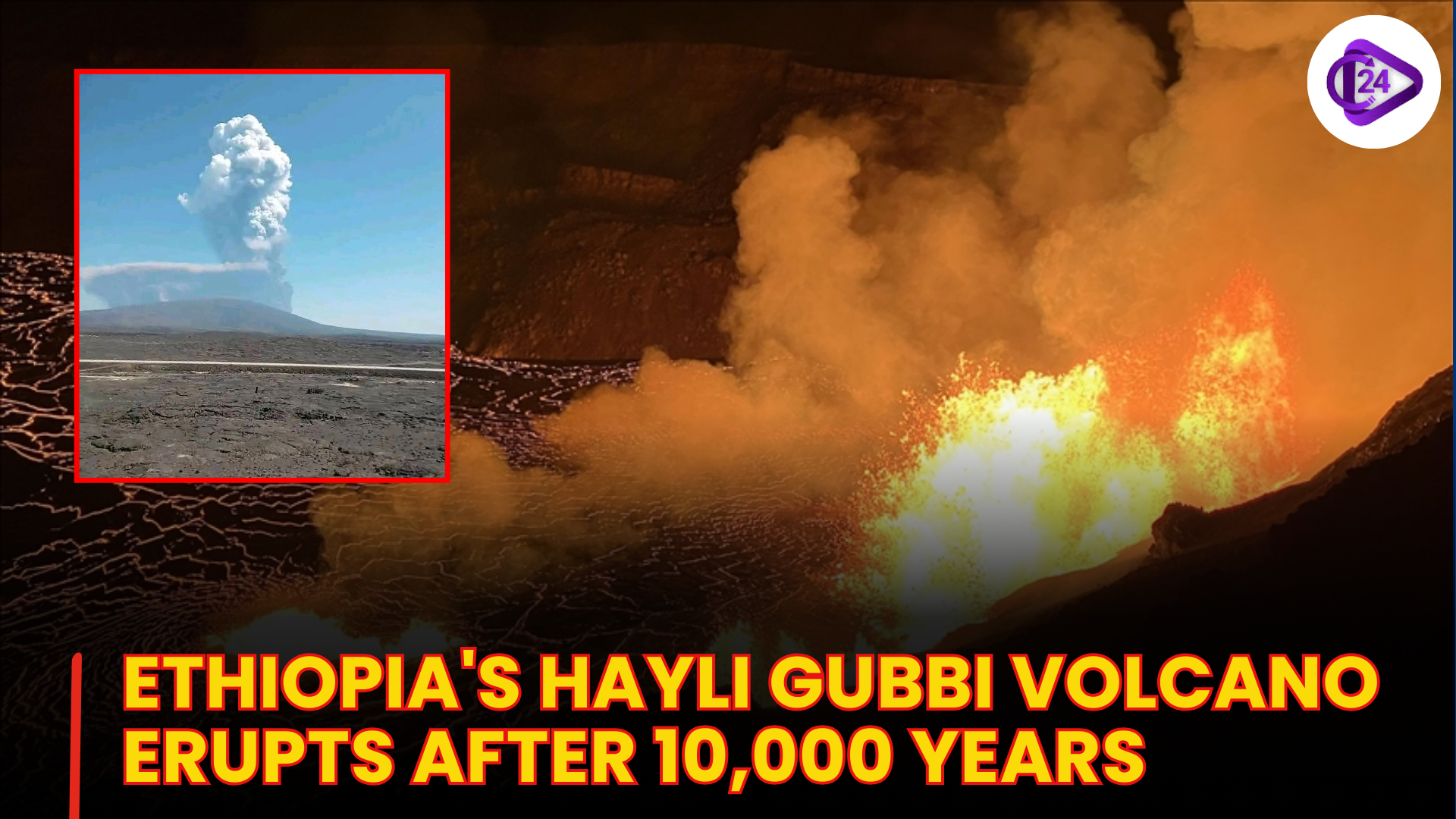
Long-dormant Hayli Gubbi volcano seems to have come to life in Ethiopia, thus marking a significant geological occurrence in this country. The volcano was located in the Northern part of the country and had been extinct since the Holocene period, which makes the possibility of this volcano suddenly becoming active not only astonishing but also essential to the scientists who are investigating the tectonic and volcanic development of the area. The eruption provides uncommon knowledge on the reactivation of the volcanoes of the East African Rift System and poses significant questions regarding volcanic hazards and monitoring in the future.
Highlights of Hayli Gubbi Volcano
-
Location: Hayli Gubbi is found in the North Ethiopia, in the East African Rift System.
-
Nearest neighbouring countries: Eritrea and Djibouti are the neighbouring countries to the north and northeast, respectively.
-
Type of eruption: It is thought that the volcano resulted in a strombolian-to-effusive eruption that is characteristic of rift-zone magma.
-
Dormancy: It is said to have been in the dormant state for almost 10,000-year years, and therefore, the recent one is of high interest.
-
Geological importance: The eruption gives some important information on how the Holocene volcanoes in the East African Rift have been reactivated.
-
Hazard potential: Its resurrection indicates the need to establish better volcano monitoring and risk evaluation in the area.
Conclusion
The occurrence of the Hayli Gubbi volcano eruption about 10,000 years and it has increased the level of alert within Ethiopia and its neighbouring countries. This geological anomaly highlights the need to monitor at all times in the East African Rift, where slumbering systems may transform into active systems, culminating in an unanticipated eruption. Strong surveillance, prevention, and scientific studies will be necessary to evaluate the threats and protect the communities in the area.



 Tom Cruise Finally Gets His Oscar Glory at the 2025 Governors Awards
Tom Cruise Finally Gets His Oscar Glory at the 2025 Governors Awards David Szalay Achieves Global Recognition with 2025 Booker Prize Win for Flesh
David Szalay Achieves Global Recognition with 2025 Booker Prize Win for Flesh Maldives Becomes First Nation to Enforce Generational Smoking Ban
Maldives Becomes First Nation to Enforce Generational Smoking Ban Trump Honored with South Korea’s Grand Order of Mugunghwa
Trump Honored with South Korea’s Grand Order of Mugunghwa Russia Stuns the World with Successful Burevestnik Nuclear Missile Test, Confirms Putin
Russia Stuns the World with Successful Burevestnik Nuclear Missile Test, Confirms Putin NASA Confirms Earth Now Has a Temporary Second Moon Named 2025 PN7
NASA Confirms Earth Now Has a Temporary Second Moon Named 2025 PN7 Timor-Leste Officially Becomes ASEAN’s 11th Member Nation
Timor-Leste Officially Becomes ASEAN’s 11th Member Nation Rodrigo Paz Elected Bolivia’s President: A New Era Begins
Rodrigo Paz Elected Bolivia’s President: A New Era Begins Astronomers Discover Evolving Ring System Around Icy Body Chiron Beyond Saturn
Astronomers Discover Evolving Ring System Around Icy Body Chiron Beyond Saturn






